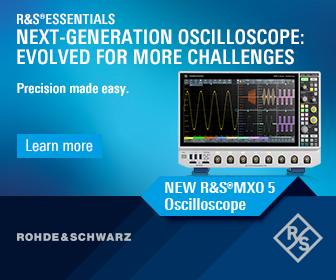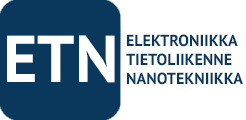
Yksi modernin teknologian sovellusten suurista trendeistä on koneet, jotka vaativat ympäristön tuntemista. Tämä voidaan tehdä kamera-antureilla, mutta niiden yksityisyyden säilyttäminen huolestuttaa monia. Suunnittelijat pohtivat vaihtoehtoisia tekniikoita, kuten millimetrialueen tutkaa.
Kirjoittaja Mark Patrick, Mouser Electronics
Käyttötapauksoa on paljon, ja ne kattavat kaiken autoteollisuudesta teollisuuteen, ja kuluttajakäyttöön. On selvää, että liikkuvien laitteiden (droonit, autot, automatisoidut ohjatut ajoneuvot, kotirobotit vain muutamia mainitakseni) on kyettävä havaitsemaan esteet ja muut ajoneuvot ja reagoimaan niihin, kun taas staattisten esineiden on oltava tietoisia lähellä olevista asioista. Esimerkiksi rakennuksissa käytetään läsnäolotunnistinta energiankäytön hallintaan, ja ajoneuvojen ohjaamoita valvotaan yhä enemmän turvallisuussyistä.
Osa tästä johtuu kestävän kehityksen vaatimuksista. Ihmisten läsnäolon havaitseminen rakennuksessa mahdollistaa valaistuksen ja muiden resurssien käytön vain silloin, kun se on todella välttämätöntä, mikä säästää arvokasta energiaa ja alentaa käyttökustannuksia. Mukavuus on toinen tekijä, joka lisää tarvetta tehtäviin, kuten oven avaamiseen, kun henkilö liikkuu sitä kohti.
Tehtaissa robotteja otetaan yhä enemmän osaksi työvoimaa. Tämä ihmisten ja robottien välinen tiivis yhteistyö tuo mukanaan monia etuja tuotoksissa, mutta aiheuttaa turvallisuusongelmia. Jos robotti (staattinen tai liikkuva) pystyy havaitsemaan lähellä olevia ihmisiä, liikettä voidaan rajoittaa väliaikaisesti ja turvallisuutta voidaan parantaa.
Ajoneuvoissa matkustajien lukumäärän, heidän sijaintinsa ja niiden likimääräisen koon ja painon tunteminen mahdollistaa oikeanlaisten turvatyynyjen laukeamisen sopivalla voimalla. Tämä varmistaa, että laukaisu on hyödyllinen äkillisen pysähdyksen aikana eikä vahingoita matkustajia. Euro NCAP vie ajoneuvon matkustajien valvontaa eteenpäin erityisesti sellaisilla alueilla kuin lasten läsnäolon havaitseminen.
Yksi läsnäolotunnistuksen tärkeimmistä komponenteista on anturi. Yleisiä näiden antureiden takana olevia tekniikoita ovat valon muuntaminen sähköksi (esim. kamera-anturit), passiivinen infrapuna ja mmWave-radiotaajuus.
Alla on ETNdigi-lehdessä ilmestynyt artikkeli kokonaisuudessaan. Lehteä pääsee lukemaan täällä.
HOW TO MAINTAIN PRIVACY IN INDOOR TRACKING
One of the major trends in modern technology applications is machines that require awareness of their surroundings. This can be done with image sensors, but there are concerns in how they maintain privacy. Designers are looking to alternative technologies such as mmWave radar.
The use cases are very broad, encompassing everything from automotive to industrial, consumer, and more. Clearly, things that move (drones, automobiles, automated guided vehicles, domestic robots, to name just a few) need to be able to detect and react to obstacles and other vehicles, while static objects need to be aware of things in their vicinity. For example, buildings use presence detection to control energy usage, and vehicle cabins are increasingly being monitored for safety reasons.
Some of this is being driven by the desire for sustainability. Detecting the presence of humans in a building allows lighting and other resources to be used only when it is truly necessary, saving valuable energy and reducing operating costs. Convenience is another driver, spurring the need for tasks such as opening a door when a person is moving towards it.
In factories, robots are increasingly being incorporated into the workforce. This close co-operation between humans and robots brings many benefits in output but creates safety concerns. If a robot (static or mobile) can detect humans nearby, then movement can be restricted temporarily and safety can be enhanced.
In vehicles, knowing the number of occupants, where they are, and their approximate size and weight allows for the correct airbags to be deployed with appropriate force. This ensures that the deployment is beneficial during a sudden stop and does not injure the passengers. Euro NCAP1 is pushing vehicle occupant monitoring forward, especially in areas such as detecting the presence of children.
One of the most important components in presence detection is a sensor. Common technologies behind these sensors include converting light to electricity (e.g., image sensors), passive infrared, and mmWave radio band.
THE ISSUE(S) WITH IMAGE SENSORS
With the number of small, high-performance, high-resolution image sensors currently available, this seems to be a natural technology to use to detect obstacles in the environment, including the presence of humans. There are limitations to this technology—primarily the need for line-of-sight vision and the inability to identify a disguised human (e.g., a small child under a blanket in a vehicle)— but from a technical perspective, the performance is more than adequate.
However, the greatest drawback with image sensors lies in the privacy concerns that they generate. For most applications, it is only necessary to detect that a human is present. Image sensors can detect which human is present – and then store that data for all time. So, to meet the need for presence detection and tracking without creating privacy concerns, designers are looking to alternative technologies such as mmWave radar.
LIMITATIONS OF EXISTING SOLUTIONS
For years, passive infrared (PIR) technology has been a popular method of detecting humans for applications such as automated lighting or security alarms. The PIR sensor detects a change in the infrared energy when a human moves into range and if a pre-set threshold is exceeded, the light is switched or alarm activated.
There are a few limitations with PIR technology, including a relatively short range that requires more sensors to be deployed. It struggles to detect humans that stand still or move very slowly and, if PIR is used outdoors, weather can render it almost useless. As it requires a direct line of sight, it is also very obtrusive.
MMWAVE RADAR FOR ACCURATE PRESENCE DETECTION
Although more complex to implement, mmWave radar offers several advantages over PIR. Since it is based on the well-understood Doppler principle, it can detect motion as well as the speed and direction of an object. Also, because it does not require infrared energy, it can detect inanimate objects. The ability to detect speed and direction allows for more intelligent decisions to be made. For example, with mmWave, a door would only open if a person is walking towards it, not walking past it.

Figure 1: Automatic doors can be operated more intelligently with motion and direction detection (Source: Texas Instruments. Redrawn by Mouser Electronics).
The operating distance for mmWave ranges from a few centimetres to hundreds of metres, allowing full coverage with a single sensor in many applications. It can also operate through thin coverings such as plasterboard (drywall), meaning that it can be deployed unobtrusively within buildings.
APPLICATIONS AND DESIGN SUPPORT
In building automation, mmWave technology can enhance convenience and security as well as reduce operating costs through controlling facilities such as lighting, heating and air conditioning based upon the presence of people. Unlike image sensors, as mmWave does not capture video, it has no privacy concerns and can be used in sensitive areas such as toilets or changing areas.
Within the automotive sector, mmWave is proving to be a useful technology for in-cabin presence detection (CPD) within vehicles. Detecting visible humans and estimating their size is well within the capability of the technology and, with this data, airbags can be deployed only where needed and at an appropriate force, thereby ensuring passenger safety.
In-vehicle CPD is increasing in importance and many technologies can detect the presence of a visible child that has been left behind. However, the precision of mmWave technology, for example, even allows the detection of babies left under a blanket by detecting the motion due to breathing and / or the heartbeat.
Texas Instruments' mmWave sensors are used in automotive advanced driver-assistance systems (ADAS) for long- and short-range applications, allowing the vehicle to be aware of its surroundings. The advanced CMOS single-chip sensors reduce design size by combining the RF front-end with a digital signal processor (DSP) and microcontroller (MCU), allowing for the detection of complex urban scenes and other road users.
The technology is also important in industrial applications, where it is used for detecting presence and liquid levels as well as guidance for warehouse robots and.

Figure 2: mmWave technology has multiple applications within the industrial sector (Source: Mouser Electronics).
While the technology may be unfamiliar to some designers, there are several tools available aimed to ease the design process. The MM5D91-00 from Jorjin Technologies Inc. is a presence detection sensor module based upon 60GHz mmWave technology. The convenient device includes one transmit antenna, three receive antennas, and a powerful Arm Cortex-M4F processor system.
GESTURE RECOGNITION
As is the case with many innovative technologies, mmWave radar is opening up new applications. For example, gesture recognition is replacing physical control panels with virtual human-machine interfaces (HMIs). Here, a person can place a hand in front of the sensor and then move it in pre-defined patterns as an input to the system. Actions are often intuitive with a flat palm indicating ‘stop’ or the rotating of a hand to move a virtual dial, increasing or decreasing a parameter such as volume.
Gesture recognition offers a few benefits, depending on where and how it is used. In automotive applications, safety and convenience are the primary advantages as drivers do not have to find a small button while driving, allowing them to keep their eyes on the road. As there is no contact between the person and the HMI, it is also more hygienic—a benefit in healthcare and catering applications, among others.
With the increasing number of small devices coming onto the market, gesture recognition also helps designers reduce the space taken up by physical HMI buttons and dials. As the device is updated to add additional functionality, new gestures can also be added to keep pace.
The market for this technology is relatively new; Global Market Insights2 estimated that gesture recognition in the automotive sector alone was valued at US$644 million in 2022). The anticipated adoption and value of the technology is recognised by the predicted 18.2% CAGR, which will value the market at US$3.25 billion by 2032.
CONCLUSION
Awareness of surroundings is key in allowing machines to have greater autonomy to move or recognise approaching hazards. While image sensors can be used for this, many people are concerned about the privacy aspects as humans can be identified and tracked.
Alternative technologies, such as mmWave radar, can provide the necessary situational awareness while eliminating privacy issues as they do not record images of faces. In fact, unlike many image sensors, 60GHz mmWave radar can operate over distances of less than 100m and in poor weather conditions, making it a preferred solution for many designers.
|
2 - https://www.gminsights.com/industry-analysis/automotive-gesture-recognition-market |
































